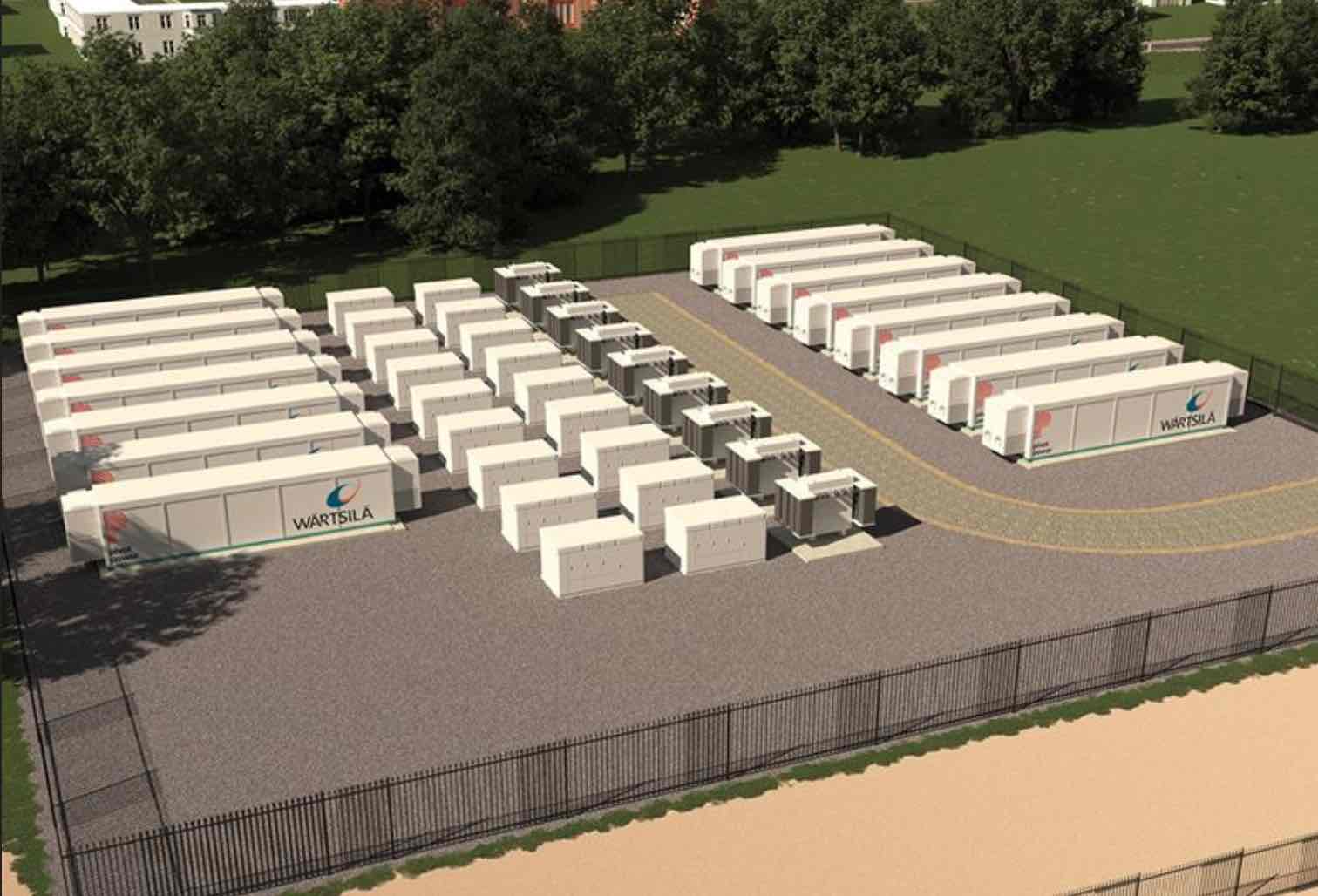The United Kingdom’s first grid-scale battery storage system connected directly to the country’s transmission network was activated on Wednesday, a 50MW lithium-ion battery that is part of the £41 million GBP Energy Superhub Oxford project.
The 50MW lithium-ion battery energy storage system was developed between Pivot Power, a UK battery technology company and subsidiary of Spanish renewable energy company EDF Renewables, along with Finnish power technology company Wärtsilä and battery storage optimisation specialist Habitat Energy.
Connected directly to the UK National Grid’s high-voltage transmission system at the Cowley substation on the outskirts of Oxford, the 50MW battery is the first component of what is intended to be the world’s largest hybrid battery, which will combine lithium-ion and vanadium redox flow systems and is set to be fully operational by year’s end.
The vanadium redox flow battery will be supplied by UK energy storage experts Invinity Energy Systems, and will measure in at 2MW.
Designed to provide essential flexibility to the UK’s grid so as to more effectively integrate more renewables, increase system resilience, and future-proof the UK’s electricity network, the energy storage system will specifically deliver power to public and commercial EV charging locations across Oxford.
“It has been our pleasure working with Pivot Power and the other partners in this project, and we are delighted to see it now become a reality,” said Andrew Luers, Co-Founder and CEO of Habitat Energy.
“Habitat Energy’s PowerIQ optimisation software and expert trading team are delivering exceptional revenue generation from battery storage assets across the UK, and soon also in Australia and other countries. We are excited to further demonstrate our capability on this, our first transmission-connected system, and shortly also on the long-duration redox flow battery.”
The new 50MW battery storage system is part of the larger £41 million GBP Energy Superhub Oxford project which is bringing together energy storage systems, EV charging, low-carbon heating, and smart energy management technologies, and is the first of up to 40 similar sites planned throughout the UK.
Intended as both a demonstrator project and part of Oxford’s plans to decarbonise by 2040, the Energy Superhub Oxford has already been in the news of late after it was announced in late-May that Dutch EV charging station operator Fastned had teamed up with Tesla to install 12 Tesla Superchargers at the Energy Superhub Oxford.
Located on Oxford’s ring road and integrating with the Redbridge Park and Ride facility, the Fastned station at Energy Superhub Oxford will initially enter operation allowing up to 10 electric vehicles to be able to charge simultaneously at rates of up to 300kW – which will allow EV drivers to add up to 300 miles (480 kilometres) of range in just 20 minutes. When completed, the Fastned station will operate 14 chargers.
The newly activated 50MW lithium-ion battery will also be providing power to the public charging hub at Redbridge Park & Ride, the UK’s largest such hub, which is expected to feature 38 fast to ultra-rapid chargers when it opens later this year.
“This is the first grid-scale battery to directly connect to the transmission network in the UK and represents a key milestone for the completion of Energy Superhub Oxford and our mission to accelerate the UK towards net zero,” said Matt Allen, CEO of Pivot Power.
“We are planning up to 40 similar sites throughout the country, totalling up to 2GW of battery storage – forming a key pillar of EDF’s plan to develop an additional 10GW of battery storage globally by 2035.”
Grid-connected battery power won’t be the only power supply for Energy Superhub Oxford, which will be powered entirely by solar nd wind generation – including some onsite generation thanks to Fastneds trademark solar canopies.
“Our mission is to accelerate the transition towards electric mobility by giving freedom to electric drivers,” said Michiel Langezaal, CEO Fastned, speaking in May. “EV drivers experience this freedom when they know that fast and convenient charging is omnipresent.
“Energy Superhub Oxford is a great initiative by the City Council that supports us in working towards that goal. We need hundreds more and will therefore continue to engage with landowners and partners such as Pivot Power across the UK. Big stations are the only way to provide charging capacity to the exponentially growing number of EVs coming to our roads.”
The 50MW lithium-ion battery activated this week will be backed by cutting edge battery energy storage technology provided by Wärtsilä, which dynamically manages the energy system and allows for the delivery of different grid reliability services, from frequency regulation to enhanced grid resilience.
“Wärtsilä’s ambition is to support countries around the world to transition to 100% renewables,” said Pekka Tolonen, Energy Business Director, Europe, Wärtsilä. “Grid flexibility and energy storage are essential to ensure the UK can hit its ambitious net zero targets in a cost-effective, sustainable and resilient way.
“Our GEMS platform enables Energy Superhub Oxford’s energy storage system to operate in a truly dynamic way, responding to the demands of the market and improving power reliability. We believe this unique collaboration is a blueprint for the use of energy storage throughout the UK and Europe.”










